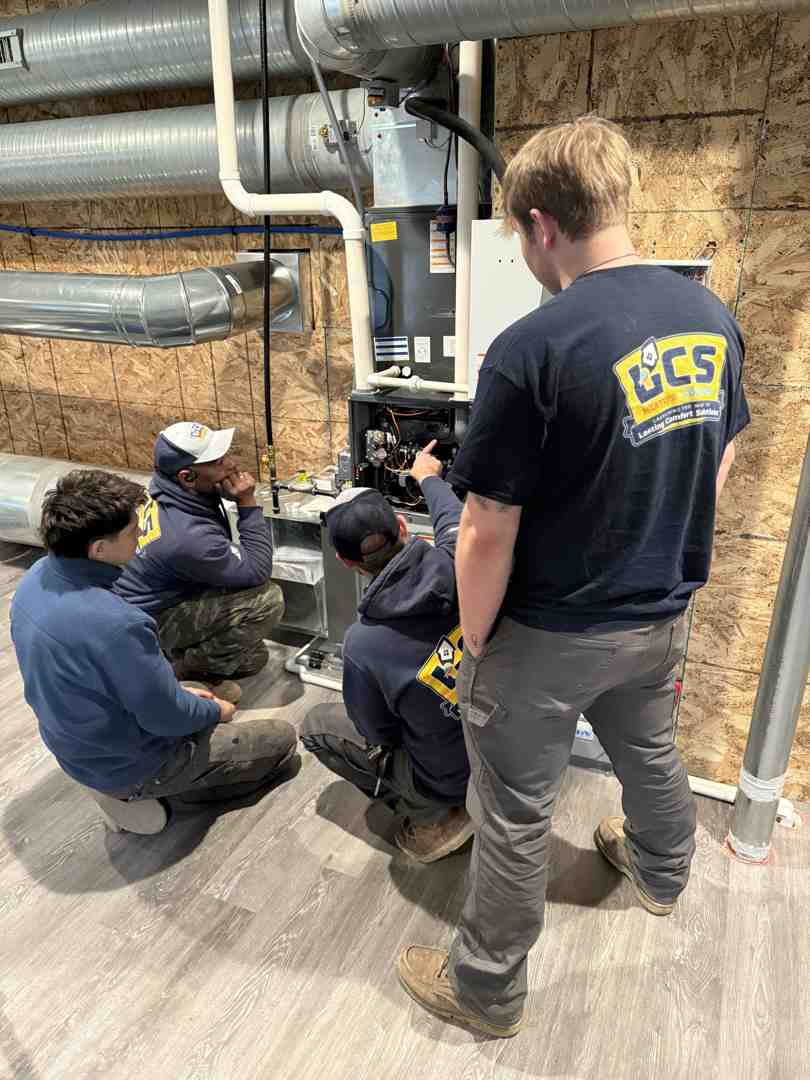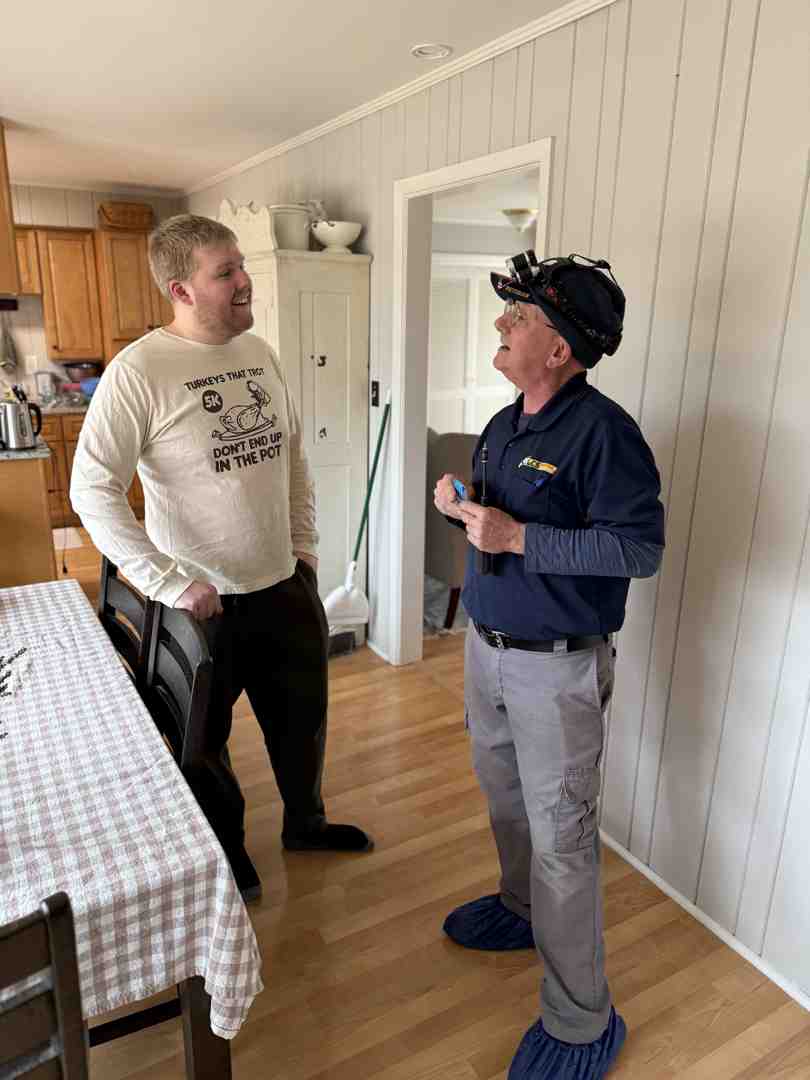Winterizing Your Home: Expert Furnace Installation Tips
Winter brings cold temperatures that require a reliable heating system to keep your home comfortable. A crucial part of preparing for winter is ensuring that your furnace is installed correctly. Proper furnace installation can significantly affect your home's warmth and energy efficiency during the coldest months.
Preparing for Furnace Installation
Assessing Your Home's Heating Needs
Assessing your home's heating needs is a critical first step in furnace installation. Begin by evaluating the size and layout of your home. Larger homes may require more powerful units or multiple furnaces to ensure even heating. Additionally, consider the insulation quality, as well-insulated homes retain heat more efficiently, possibly reducing the furnace size needed.
Our professionals can conduct a thorough heat-load calculation to determine the appropriate furnace size for your home. This process considers factors like room sizes, window placements, and your home's overall design. Understanding your heating requirements helps in selecting a furnace that provides optimal performance without overworking, ensuring cost-efficiency and comfort.
Choosing the Right Furnace
Selecting the right furnace involves several considerations, including fuel types, efficiency ratings, and price. Furnaces typically use natural gas, oil, or electricity. Each fuel type has its advantages and limitations in terms of availability, cost, and efficiency. Natural gas furnaces are usually popular for their cost-effectiveness and efficiency.
Efficiency ratings, denoted by the Annual Fuel Utilization Efficiency (AFUE) percentage, indicate how well a furnace converts fuel into heat. Higher AFUE ratings mean better efficiency but may come at a higher initial cost. Choosing a furnace with a high AFUE rating can result in long-term savings on energy bills.
Finally, consider your budget. While high-efficiency models may have a higher upfront cost, they often offer better performance and savings over time. Our professionals can help you weigh these factors to select a furnace that meets your specific needs and budget.
Key Steps in Furnace Installation
Site Preparation
Proper site preparation is essential for a smooth furnace installation. First, ensure the installation area is clean and accessible. Clear out any obstructions or items that may hinder access to the installation site. This space should provide enough room for the technicians to work and for the furnace to be installed safely.
Next, verify that necessary utilities like gas lines, electrical wiring, and ventilation systems are in place and up to code. Inadequate or outdated utility connections can complicate the installation process and pose safety risks. Our professionals will inspect these connections to ensure they meet safety standards, making any necessary upgrades to accommodate the new furnace.
Installing the Furnace
Once the site is prepared, the actual furnace installation can begin. The first step involves positioning the furnace in the designated area and securing it firmly. Technicians then connect the furnace to the appropriate fuel source, be it natural gas, oil, or electricity. Proper connection of these utilities is crucial for safe and efficient furnace operation.
The next step is to set up the ductwork and ventilation systems. It’s important to ensure that the ducts are properly sealed and insulated to prevent heat loss and improve efficiency. Our technicians will also check that the venting systems are clear and allow for the safe expulsion of exhaust gases.
Finally, after all connections are made, the furnace is tested to ensure it operates correctly. Our professionals will check for proper ignition, consistent heating, and efficient airflow. Any necessary adjustments are made to optimize performance, ensuring your home remains warm and comfortable throughout the winter.
Common Challenges and Solutions During Installation
Space Constraints
Space constraints can pose significant challenges during furnace installation. In many homes, finding a suitable location that meets all safety and operational requirements can be tricky. Small basements or utility rooms may lack the necessary space for a furnace to be installed correctly.
One effective solution is to evaluate alternative locations within the home that offer more space, such as a larger basement area or a dedicated utility room. Another option is to consider compact furnace models designed to fit smaller spaces without compromising efficiency. Our professionals can help assess your home's layout and recommend the most suitable installation site, ensuring that space constraints do not hinder optimal furnace performance.
Ventilation Issues
Proper ventilation is crucial for furnace installation. Without adequate ventilation, harmful gases like carbon monoxide can accumulate, posing serious health risks. Ventilation issues often arise when installing a new furnace in an older home with outdated or insufficient venting systems.
To address these issues, ensure that the furnace is connected to a venting system that meets modern safety standards. This may involve upgrading existing ducts or adding new ventilation pipes to facilitate proper airflow. Our technicians can inspect and modify your home's venting system to guarantee safe and efficient furnace operation. They ensure that all exhaust gases are safely expelled and the furnace operates at peak performance.
Post-Installation Tips for Optimal Performance
Regular Maintenance Checks
Regular maintenance checks are essential for keeping your furnace running smoothly. Scheduling annual inspections with our professionals helps identify and resolve minor issues before they become major problems. During these checks, technicians will clean components, inspect electrical connections, and verify that the furnace operates efficiently.
Routine maintenance also extends the lifespan of your furnace. By addressing wear and tear early, you can avoid costly repairs and ensure consistent heating throughout the winter. Filter replacements, cleaning the blower assembly, and checking the thermostat settings are all part of a comprehensive maintenance routine.
Efficient Use of the Furnace
Using your furnace efficiently maximizes its lifespan and minimizes energy costs. Simple practices, like setting the thermostat to a consistent temperature and using programmable thermostats, can make a big difference. Avoid frequently adjusting the thermostat, as this can cause the furnace to work harder and wear out faster.
Ensure that vents and registers are clear of obstructions to allow even heat distribution. Closing off unused rooms can also help direct heat to areas where it is needed most. Our technicians can offer additional tips and strategies to help you use your furnace more efficiently, ensuring your home remains comfortable without unnecessary energy waste.
Conclusion
Proper furnace installation is essential for maintaining a warm and efficient home during the winter months. From assessing your heating needs and choosing the right furnace to overcoming common installation challenges and ensuring optimal performance, every step plays a vital role in the effectiveness and longevity of your heating system. By understanding and applying these essential furnace installation tips, you can prepare your home for the winter months with confidence.
For expert furnace installation in Lawrence, IN, contact LCS Heating & Cooling. Our experienced professionals are dedicated to providing top-quality installation and maintenance, ensuring your home stays warm and comfortable. Call us today to schedule a consultation or learn more about our services!


